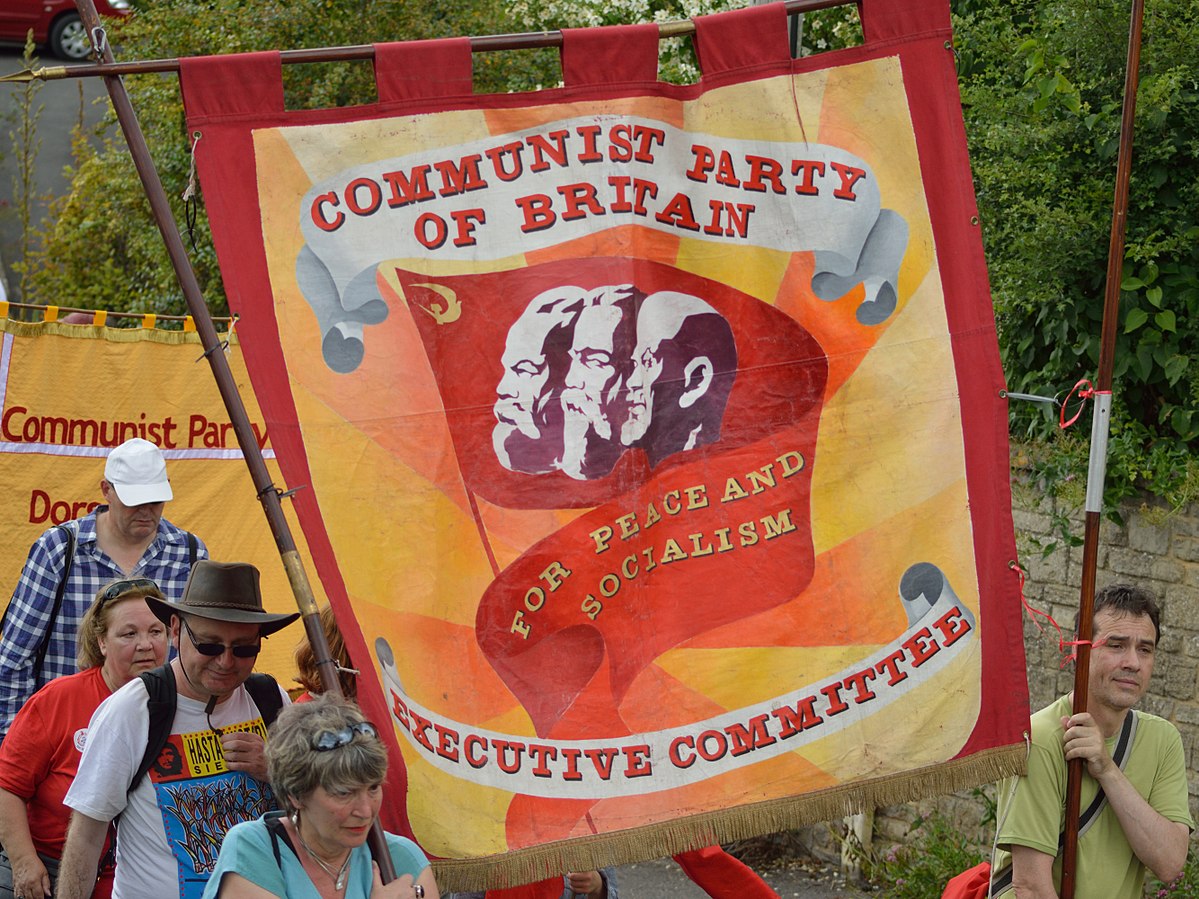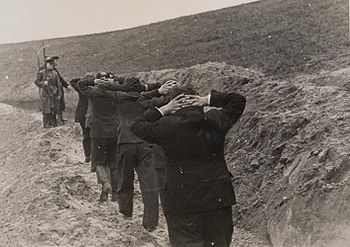The Nature and Future of Communism (Part 2)

Human drive for equality will always be with us. Communism is one of its most rabid manifestations. Therefore its promise will endure, albeit in ever-changing forms. Let us look at the definition, ideology, typology, practice, and phases of Communism.
Marek Jan Chodakiewicz
(…)
The second portion of the post-Soviet sphere consists of the western periphery of the former Soviet Union. Here the flavors of post-Communism are much richer than in Central Europe. In Belorussia the post-Communists enjoy a dictatorial monopoly on power. In the Baltics, they are more often than not relegated to the opposition, whereas in Ukraine it is the opposite. In Moldova, Georgia, and Armenia the post-Communists oscillate in power with the ex-post-Communists, or these who, genuinely or not, cut themselves off from their totalitarian past, and other coalitionists, the nationalists in particular. The weaker the post-Communist grip on economy and culture, the better the chances for democracy.
That also applies in the third portion of the post-Soviet sphere: the southern rim of the former USSR. Here post-Communism is at its most blatant. Freely blending socialism, nationalism, and religion (usually Islam), the post-Communists ruthlessly wield the Marxist tools of power. The so-called “Stans” (Azerbaidzhan, Tadzhikistan, Turkmenistan, Kyrgyzstan, and Kazakhstan) are classical, post-Communist satrapies. They are characterized by various levels of totalitarian control, where Marxist institutions and systemic devices fabulously serve the post-Communists to maintain themselves in power.
In many ways, the satrapies outdid the Muscovite center in the loyalty to the Marxist-Leninist model. Meanwhile, in the Russian Federations, there are several faces of post-Communism. There are Stalinist post-Communists, imperial post-Communists, and “liberal” ex-post-Communists. Each of these orientations has, in turn, a number of mutations. Generally, the imperial post-Communists have been in power since the implosion of the USSR. Ex-post-Communists briefly enjoyed some political influence as “liberals” in the 1990s but now they are eclipsed. The majority Stalinists indulge in parliamentarism. A minority has chosen a revolutionary path. They have emerged in a confusing array of groups and in alliance with equally repugnant and divided national socialists. Some of these rabid sects fuse to present an ugly National-Bolshevik face. But even the imperial post-Communists in power employ a schizoid combination of the Tsarist tradition, Christian Orthodoxy, nationalism, and Bolshevism to maintain their legitimacy with the Russian population. The social, cultural, economic, and political discourse of Russia continues, tragically, within the Marxian framework which alone allows for such dialectical contortions.
Our next category consists of post-colonial post-Communism. Here we mean Mongolia (an exception from geographical taxonomy) and a few African countries. In recent elections in Mongolia the post-Communists clashed with ex-post-Communists. The latter prevailed. In Africa post-Communism afflicts almost the entire continent, whose tyrants have gladly experimented with Marxism, but in particular the former Soviet colonies of Ethiopia, Mozambique, and Angola. In Ethiopia a post-Communist junta of nationalist coloring with some religious undertones remains in power (parenthetically, the Marxist regimes of Eritrea and Tigre, former parts of the Abyssinian Empire, are of a similar brand). Since the mid-seventies Mozambique has been ruled by the Marxist FRELIMO, whose permanent leadership unconvincingly claims to have abandoned Communism for social democracy. Post-Communism, as Communism before, is the main method of exercising power within a tribal society, and the (post)Communist party serves as a vehicle for the Shangaan tribe to control the government. Things are similar in Angola, where the ruling post-Communists represent mainly the western tribes, the Mbundu in particular.
It is in a different manner that post-Communism has emerged rampant in the Republic of South Africa and Zimbabwe. Neither was a Soviet colony. However, their Communist parties and/or their “national liberation movements” were Soviet satellites and creations. South Africa has just democratically elected its president who harkens from the Communist terror apparatus and rules with the help of the post-Communist party and post-Communist trade unions. Zimbabwe’s president and his tribal post-Communist party enjoyed similar Soviet, North Korean, and East German connections in the nation’s secret police. Unlike his South African counterpart, the president of Zimbabwe has ruled as a dictator for several decades notwithstanding a recent and very tenuous power-sharing arrangement with his erstwhile party comrades, now ex-post-Communist coalition members.
The last post-Communist sphere lays in Latin America. Here is the hub of the post-Communist-wanna-bes. They endeavor to emulate totalitarian Cuba. Lately, the post-Communists have won elections in El Salvador and Nicaragua. But Venezuela remains the leading trailblazer of tropical post-Communism. Its comandante has shrewdly taken advantage of the parliamentary approach to take ride a wave of populism to power. He maintains himself at the helm through a combination of plebiscitarian democracy, Marxian etatism, and post-Communist institution building, while steadily limiting the rights and freedom of fellow citizens. Simultaneously, the post-Communists-wanna-bes of Venezuela employ both class and race struggle in their quest for total power. They mobilize the indigenous people, traditionally the most destitute portion of the population, against the rest, i.e., against the mestizo and European-descended population. Thus, Venezuela clearly evolves toward Communism.
Recently, the president of Honduras has attempted to implement a Venezuelan option but his ambition was checked by a joint action of the nation’s supreme court, parliament, and the army. On the other hand, Bolivia has succeeded in approximating the Venezuelan post-Communist model in the closest way. There the post-Communist-wanna-be leaders democratically introduced through a plebiscite an affirmative action system which favors the indigenous people over the rest. Similar class-cum-race struggles rage in Paraguay, Peru, Mexico, and elsewhere without a clear outcome yet.
At any rate, virtually all Latin American leaders are rather favorably disposed toward Venezuela and Cuba. The social democratic president of Chile has traveled to warm fuzzy Castro. The Brazilian leader Lula has expressed symbolically his admiration of the Communist ideology when he appeared at his own presidential inauguration wearing a button of Lenin in his lapel. Some of it can be understood as pandering to the virulent anti-Yankeeism in Latin America. But much of it reflects cultural permissivism which turns a blind eye to Communist crimes. That blindness dictates that Communism is good for it allegedly makes people equal. Nefarious regimes in the making (or perpetually in power) result to blight the Third World even more.
Meanwhile, in the West, the anti-anti Communist admirers of Marxist egalitarianism and – by extension – Communist tyrannies everywhere wear ubiquitous Che Guevara T-shirts and attend Parisian fashion shows, where the models dress in the garb of the Soviet secret police. The continuing success of Communism (now in its post-Communist stage) can be further traced back to the lack of reckoning for its crimes. There was no Nuremberg for the atrocities of Communism. The tragedy of crime without punishment is simply galling. And the human drive for equality will continue to express itself in Communism and post-Communism until we have succeeded in changing culture. Then it will no longer be cool to be a Communist. Moreover, it will also become a shame to have been an anti-anti-Communist, an attitude all too many liberals cherish. But they should know better: no justice, no peace.
We thank prof. Marek Jan Chodakiewicz for sharing this article.



